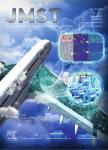Anti-inflammatory and anabolic biphasic scaffold facilitates osteochondral tissue regeneration in osteoarthritic joints
作者机构:Translational Medicine R&D CenterInstitute of Biomedical and Health EngineeringShenzhen Institutes of Advanced TechnologyChinese Academy of SciencesShenzhen 518055China AO Research Institute DavosClavadelerstrasse 8Davos Platz 7270Switzerland Musculoskeletal Research LaboratoryDepartment of Orthopaedics & TraumatologyThe Chinese University of Hong KongHong Kong SAR 999077China CAS-HK Joint Lab of BiomaterialsJoint Laboratory of Chinese Academic of Science and Hong Kong for BiomaterialsTranslational Medicine Research and Development CenterShenzhen Institutes of Advanced Technology of Chinese Academy of Sciences and The Chinese University of Hong KongChina Department of Biomedical EngineeringFaculty of EngineeringThe Hong Kong Polytechnic UniversityHong Kong SAR 999077China
出 版 物:《Journal of Materials Science & Technology》 (材料科学技术(英文版))
年 卷 期:2023年第156卷第25期
页 面:20-31页
核心收录:
学科分类:07[理学] 070205[理学-凝聚态物理] 08[工学] 080501[工学-材料物理与化学] 0805[工学-材料科学与工程(可授工学、理学学位)] 080502[工学-材料学] 0702[理学-物理学]
基 金:supported by the collaborative project from the National Key R&D Program of China and Innovation and Tech-nology Fund Mainland-Hong Kong Joint Funding Scheme(Nos.2021YFE0202300 and MHP/011/20) the Sino-Swiss collaborative project from the Ministry of Science and Technology and the Swiss National Science Foundation under the SSSTC program(Grant Nos.2015DFG32200 and 156362) Shenzhen Collaborative Innovation Plan-International Cooperation Project(Grant No.GJHZ20190821160803823) Development and Reform Commission of Shenzhen Municipality(2019)(No.561) Shenzhen Double Chain Project for Innovation and Development Industry supported by Bureau of Industry and Information Technology of Shenzhen(No.201908141541)
主 题:Biphasic scaffold Osteochondral defect Osteoarthritis Kartogenin Cinnamaldehyde Anti-inflammation
摘 要:Osteochondral defects (OCD) are common but difficult to heal due to the low intrinsic repair capacity of cartilage and its complex hierarchical structure. In osteoarthritis (OA), OCD become more challenging to repair as both cartilage and subchondral bone regeneration are further impaired due to the arthritic environment. Numerous biomaterials have been developed and tested in osteochondral defects while ignoring the inflammatory environment. To target this challenging underlying pathophysiology, we designed and fabricated a biphasic porous and degradable scaffold incorporating anti-inflammatory and anabolic molecules by low-temperature rapid prototyping technology, and its effects on promoting osteochondral regeneration were evaluated using our well-established OA-OCD rabbit model. The biphasic porous scaffolds consisted of poly lactic-co-glycolic acid (PLGA) with kartogenin (KGN) for cartilage repair and PLGA and β-calcium phosphate (PLGA/β-TCP) with cinnamaldehyde (CIN) for subchondral bone repair. KGN is a molecule for promoting chondrogenesis and CIN is a phytomolecule for enhancing osteogenesis and alleviating inflammation. The biphasic scaffolds PLGA/KGN-PLGA/β-TCP/CIN (PK/PTC) with bio-mimic structure provided stable mechanical properties and exhibited excellent biocompatibility to support cell adhesion, proliferation, migration, and distribution. Furthermore, KGN and CIN within biphasic scaffolds could be released in a controlled and sustained mode, and the biphasic scaffold degraded slowly in vitro . Evaluating the repair of 16-weeks post-implantation into critically sized OA-OCD rabbit models revealed that the biphasic scaffold could promote subchondral bone and cartilage regeneration, as well as reverse subchondral osteosclerosis caused by inflammation in vivo . These findings support the utilization of the PK/PTC scaffold for osteochondral regeneration and provide a promising potential strategy for clinical application for the treatment of patients with



